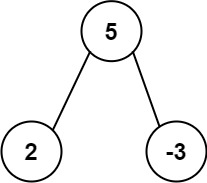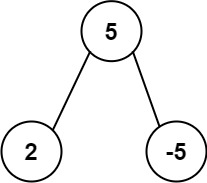508. Most Frequent Subtree Sum
508. Most Frequent Subtree Sum
Description
Given the root of a binary tree, return the most frequent subtree sum . If there is a tie, return all the values with the highest frequency in any order.
The subtree sum of a node is defined as the sum of all the node values formed by the subtree rooted at that node (including the node itself).
Example 1:

1 | Input: root = [5,2,-3] |
Example 2:

1 | Input: root = [5,2,-5] |
Constraints:
- The number of nodes in the tree is in the range
[1, 10^4]. -10^5 <= Node.val <= 10^5
Hints/Notes
- N/A
Solution
Language: C++
1 | /** |